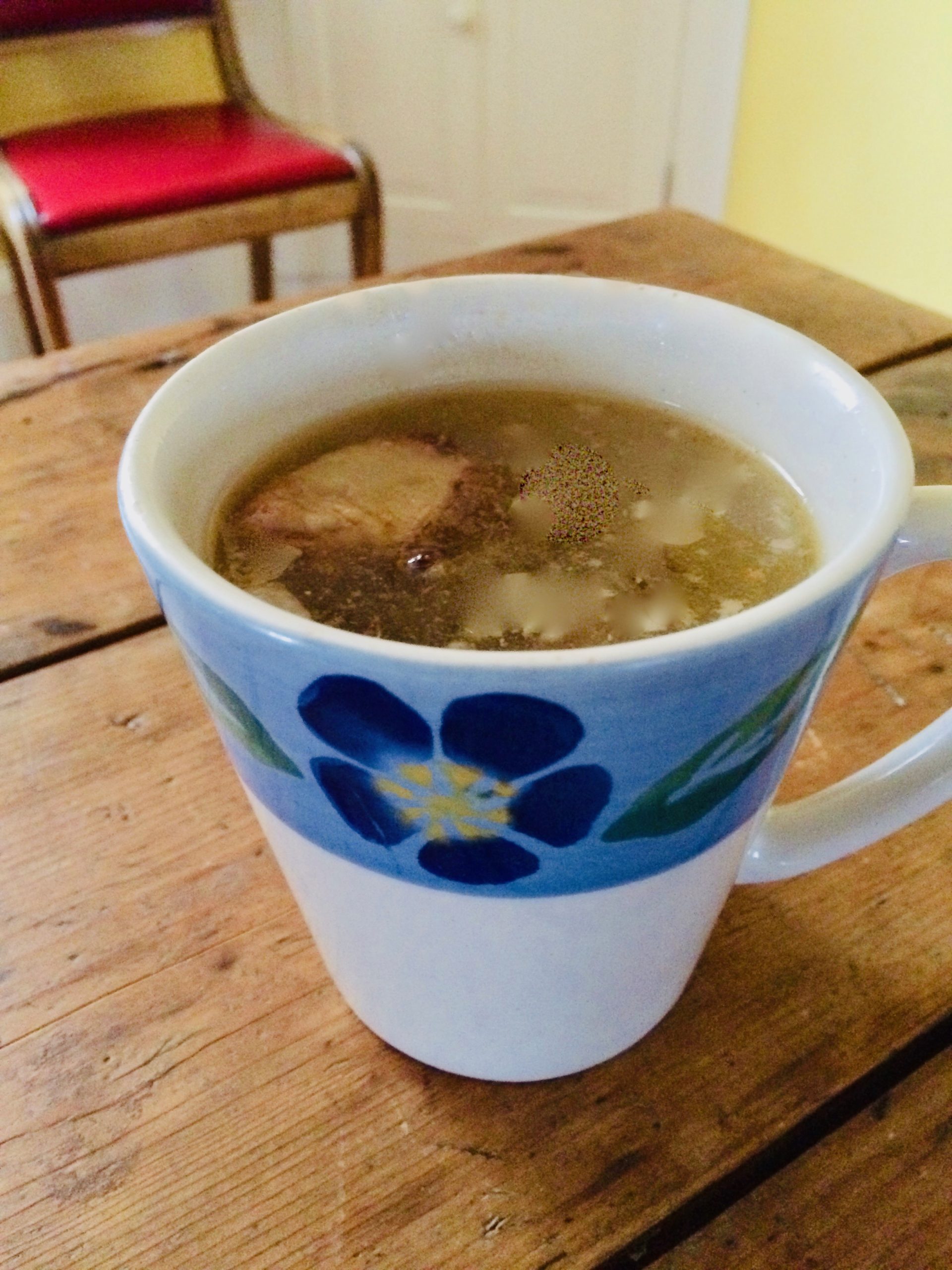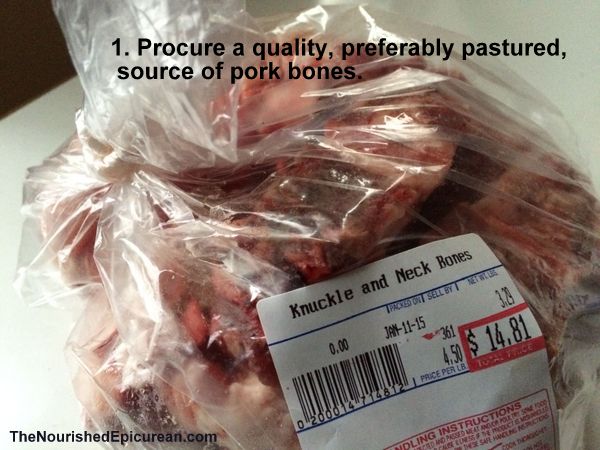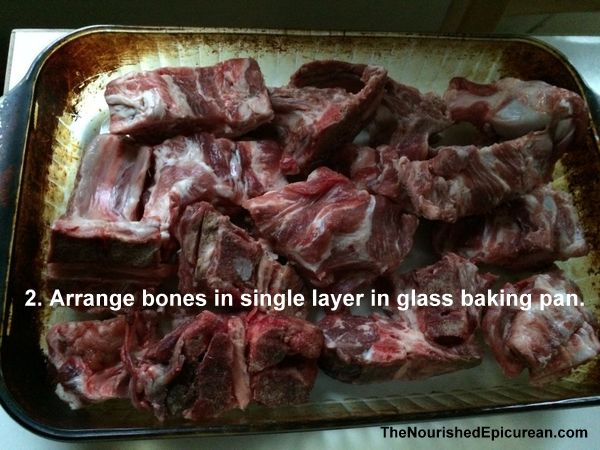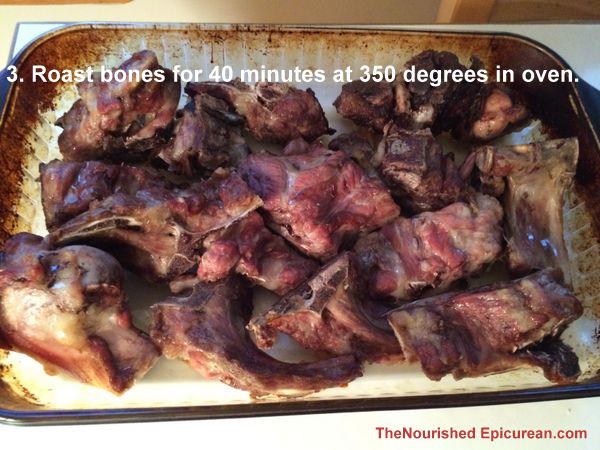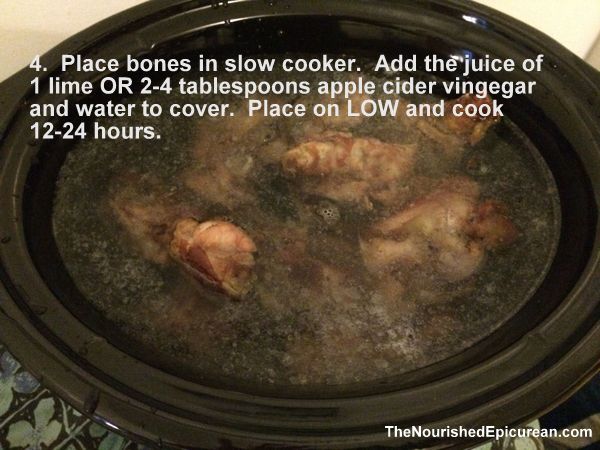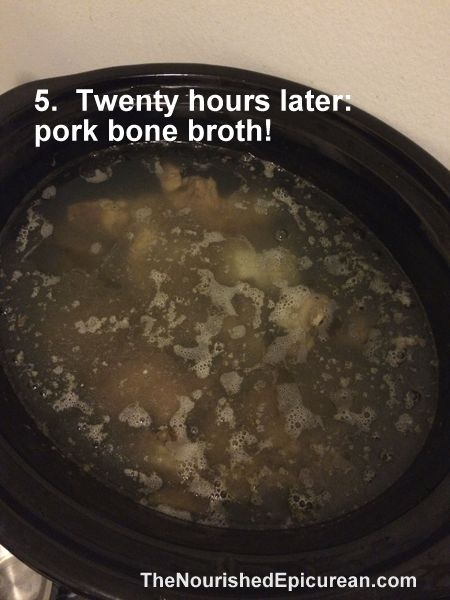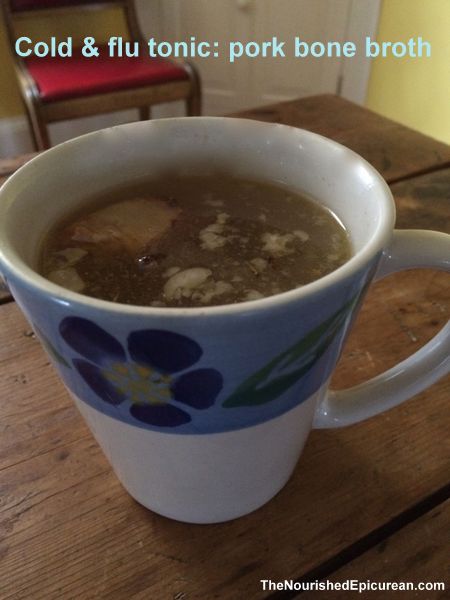I love me some good pork, but I stopped eating it a few years ago because I wasn’t able to find quality, pasture-raised pork. Now, it’s back on my menu after discovering excellent Hudson Valley sources of pasture-raised pork.
This winter has been bitterly cold, and there’s nothing more comforting than waking up to the warm, savory aroma of a pork bone broth simmering in the slow cooker. For best results—that is, a pork bone broth that congeals once refrigerated—I use pastured-raised pork neck and knuckle bones (courtesy of Sawkill).
Bone broth is an Old World superfood that has suddenly become trendy. The L.A. Lakers are drinking bone broth as part of their official team diet, and, since November, New Yorkers have been flocking to Brodo, the tiny takeaway window, where you can order bone broth at chef Marco Canora’s East Village restaurant, Hearth. Move over Starbucks. At Brodo, customers willingly pay $4-$9 for a cup (8 oz. to 16 oz.) of bone broth, and $15 to $17 for a “Kitchen Size” quart to take home.
Why is bone broth all the rage?
Nutrient-dense. Bone broth is rich in minerals that can be easily absorbed by the body, such as calcium, magnesium, phosphorus, silicon, sulphur, zinc, and other trace minerals.
Improves gut health. Gelatin is a nutrient found in bone broth. Gelatin makes its presence visible when broth cools and congeals, resulting in a jiggly, Jello-like texture. Gelatin aids digestion and it can help heal leaky gut (intestinal permeability) that manifests as diarrhea, constipation, IBS, or food intolerances. Traditionally, gelatin has been used in the treatment of peptic ulcers, tuberculosis, infectious diseases, diabetes and cancer.
Rebuilds connective tissue. Athletes also benefit from two amino acids in bone broth—proline and glycine—present in gelatin, which can help with recovery from tendonitis or achy joints.
Protect your joints. Bone broth is excellent source of glycosaminoglycans (GAGs), a group of compounds that help repair cells. Chondroitin sulfates and glucosamine are two naturally occurring GAGs that are sold as expensive supplements that help reduce inflammation, joint pain and arthritis—better to get what you need from homemade bone broth!
Maintains a youthful complexion. Regular consumption of bone broth, which is rich in collagen, can contribute to a glowing, wrinkle-free complexion and healthy hair and nails.
Provides immune support. Bone broth contains a high concentration of minerals and amino acids that help reduce inflammation.
Promotes bone health. When bones simmer in water, they impart calcium, magnesium and phosphorus, essential minerals for bone health.
Stretches your food dollar. Bone broth is both nourishing—and filling. Stretch your food budget (especially for quality, pasture-raised meats) by finding a trusted source of bones, which often come with a little meat on them, from grass-fed animals. I’ve found grass-fed beef bones at the farmers’ market for $2.50 / pound and pastured pork bones for $4.00 to $4.50 / pound buying directly from a farm or butcher.
Pork Bone Broth
*Beef bone broth is wonderful and popular (my recipe here), but a good pork bone broth is out of this world!
3-4 lbs. pastured pork bones (ideally, neck and knuckle bones)
An acid: juice of 1 lime or lemon OR 2-4 tablespoons apple cider vinegar
3 to 3-1/2 quarts of filtered water
Making a good pork bone broth is simple. Here’s how:
1. Procure a quality source of pork bones from pasture-raised pigs.
2. Wash and rinse bones. Pat dry. Arrange pork bones in a single layer in a glass baking pan.
3. Place pan on center rack. Roast bones in a pre-heated oven at 350 degrees for 40 minutes.
4. Place bones in slow cooker or crockpot. Add an acid, which draws the minerals out of the bones, like the juice of 1 lime or lemon, OR 2-4 tablespoons of apple cider vinegar. Add water to cover the bones. Bring to a gentle simmer by cooking on “High” for 1.5 to 2 hours. Reduce heat to “Low” and cook at least 6 to 8 hours, or up to 12-24 hours. (I generally simmer my bone broth for 24 hours).
5. Pork bone broth at the 20 hours mark!
6. Bone broth is an excellent cold and flu tonic. I have also found pork bone broth to be an especially filling and nourishing food to consume during a whole foods cleanse.
Enjoy!

